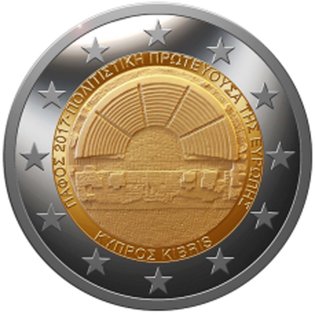EUR-Lex Access to European Union law

This document is an excerpt from the EUR-Lex website
Document C2017/327/04
New national side of euro coins intended for circulation
New national side of euro coins intended for circulation
New national side of euro coins intended for circulation
OJ C 327, 29.9.2017, p. 10–10
(BG, ES, CS, DA, DE, ET, EL, EN, FR, HR, IT, LV, LT, HU, MT, NL, PL, PT, RO, SK, SL, FI, SV)
|
29.9.2017 |
EN |
Official Journal of the European Union |
C 327/10 |
New national side of euro coins intended for circulation
(2017/C 327/04)

Euro coins intended for circulation have legal tender status throughout the euro area. For the purpose of informing the public and all parties who handle the coins, the Commission publishes a description of the designs of all new coins (1). In accordance with the Council conclusions of 10 February 2009 (2), euro-area Member States and countries that have concluded a monetary agreement with the European Union providing for the issuing of euro coins are allowed to issue commemorative euro coins intended for circulation, provided that certain conditions are met, particularly that only the 2-euro denomination is used. These coins have the same technical characteristics as other 2-euro coins, but their national face features a commemorative design that is highly symbolic in national or European terms.
Issuing country : Cyprus
Subject of commemoration : Paphos 2017 – European Capital of Culture
Description of the design : The design shows the ‘Paphos Ancient Odeon’, a small amphiteatre dating back to the 2nd century AD. Nowadays it is used in the summer for musical theatrical performances and it will be the venue of a number of events to be held within the program of ‘Paphos 2017 – European Capital of Culture’. The issuing country’s name ‘ΚΥΠΡΟΣ KIBRIS’ and the phrase ‘Πάφος 2017 – Πολιτιστική πρωτεύουσα Ευρώπης’ (i.e. Paphos 2017 – European capital of Culture) are inscribed on the inner part of the national side of the coin.
The coin’s outer ring depicts the 12 stars of the European flag.
Number of coins to be issued :
Date of issue : Fourth quarter of 2017
(1) See OJ C 373, 28.12.2001, p. 1 for the national faces of all the coins issued in 2002.
(2) See the conclusions of the Economic and Financial Affairs Council of 10 February 2009 and the Commission Recommendation of 19 December 2008 on common guidelines for the national sides and the issuance of euro coins intended for circulation (OJ L 9, 14.1.2009, p. 52).

